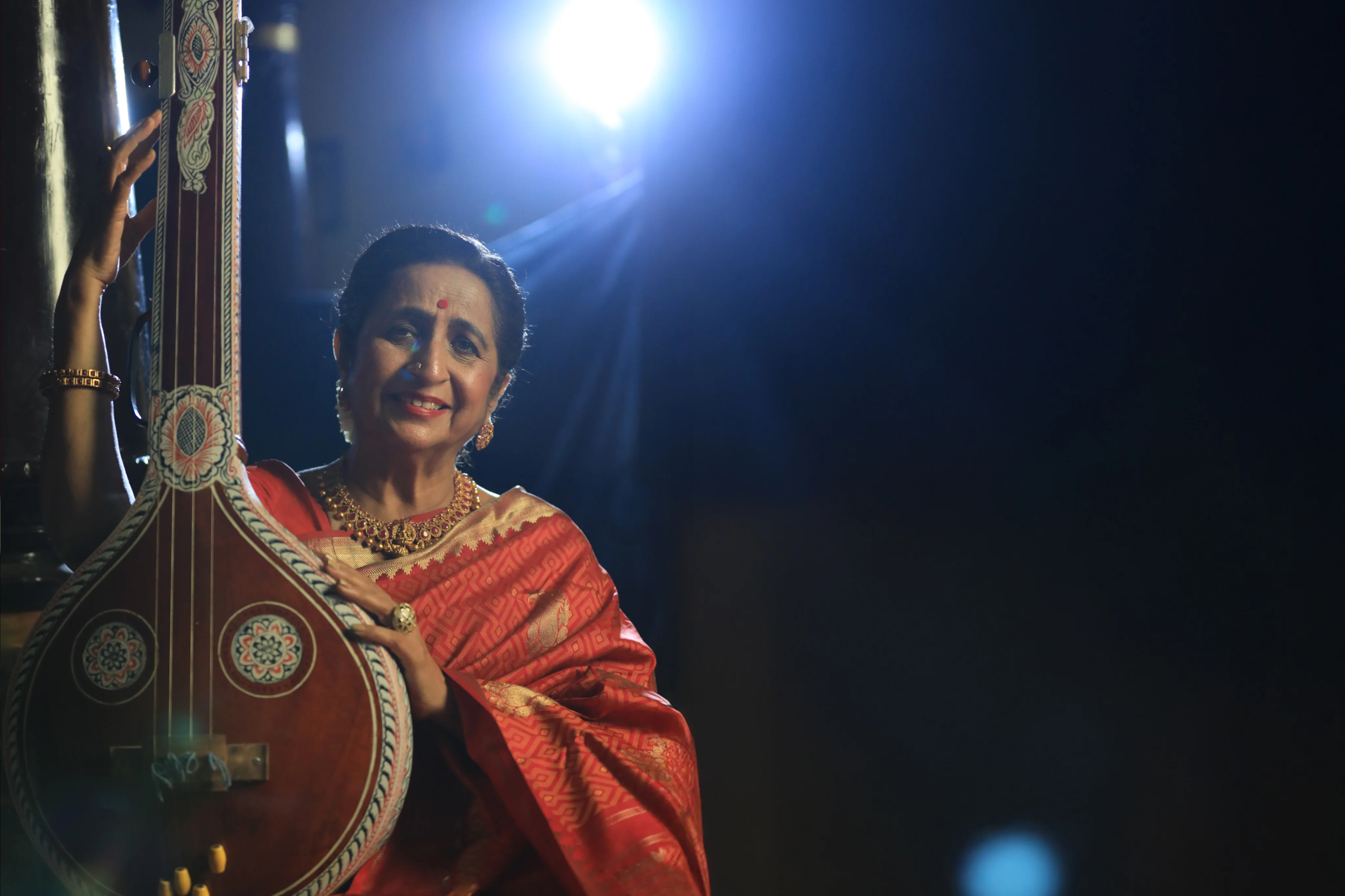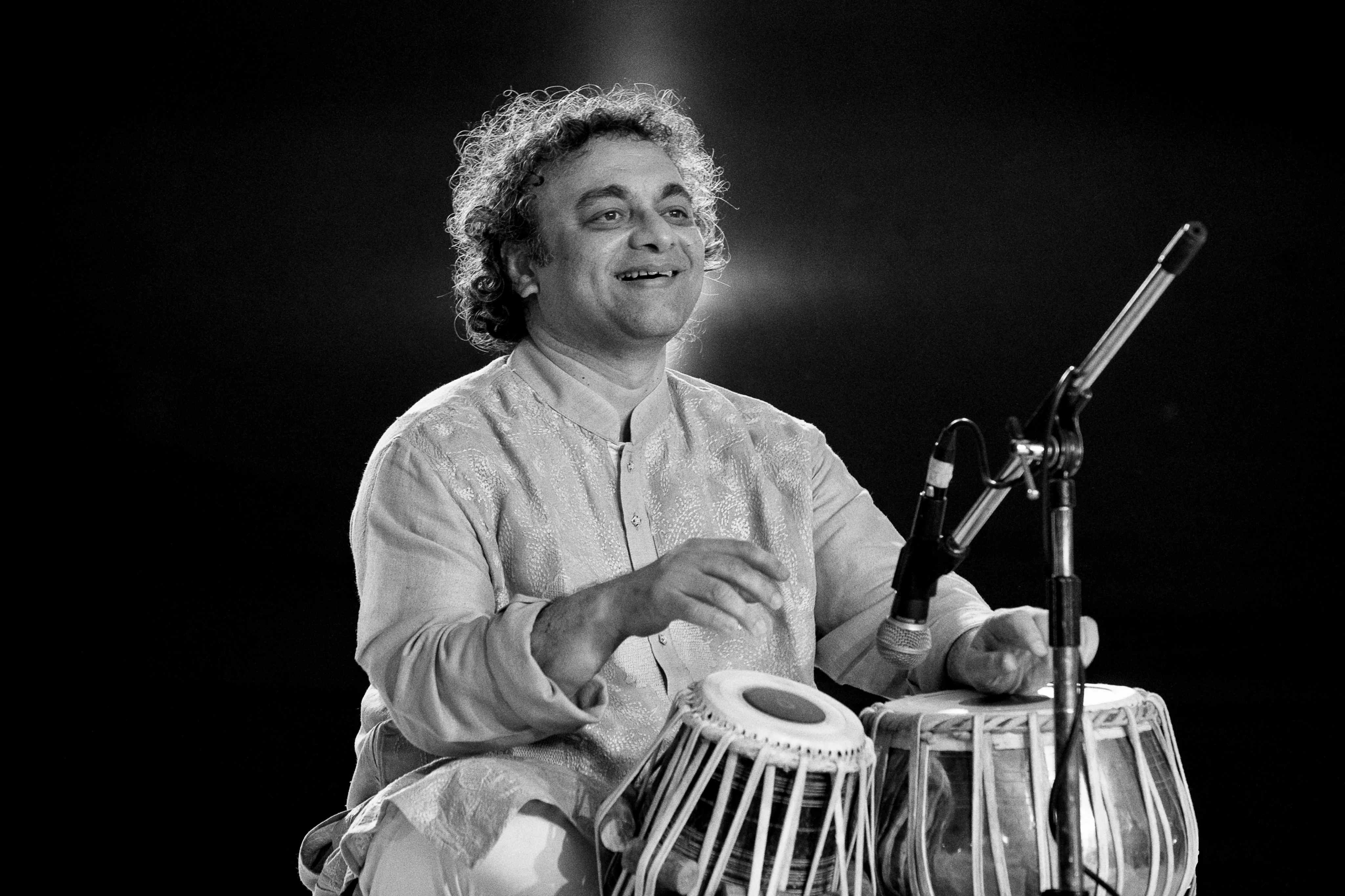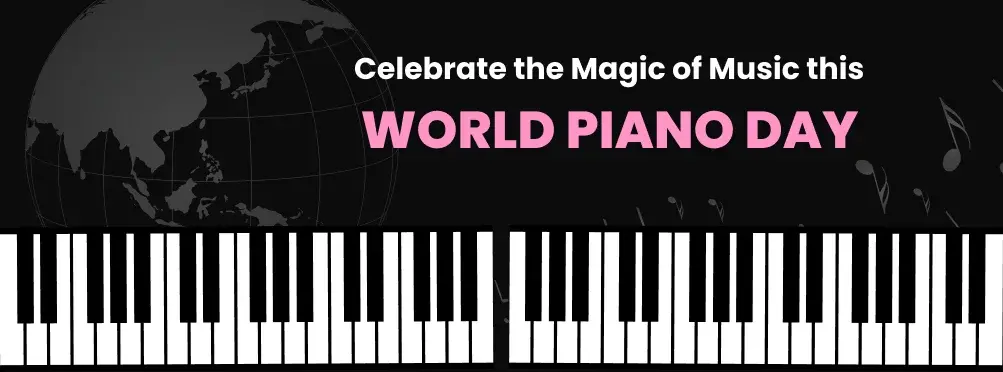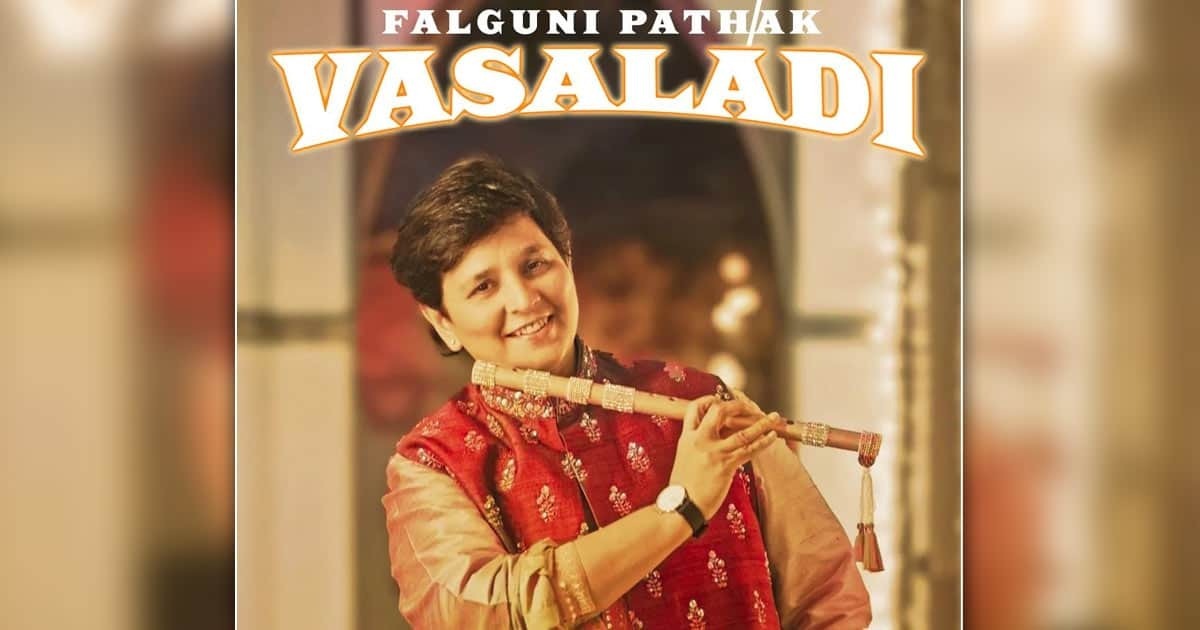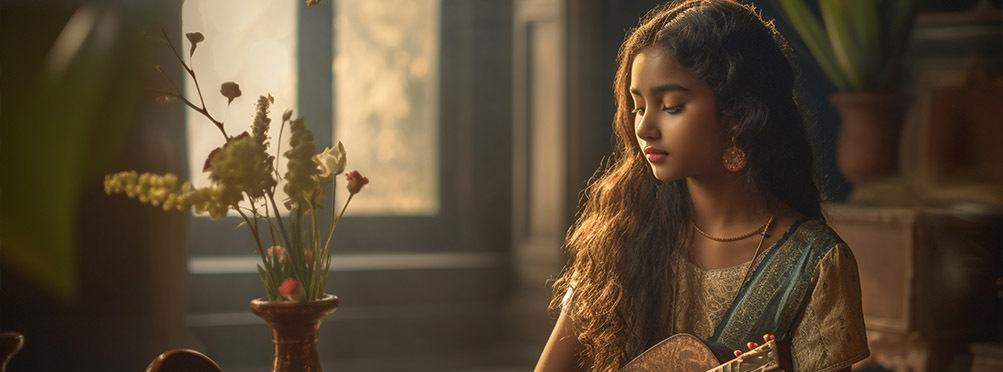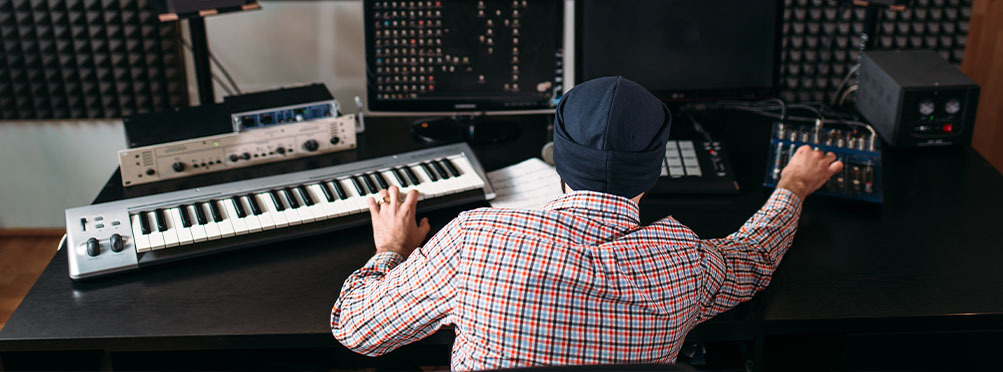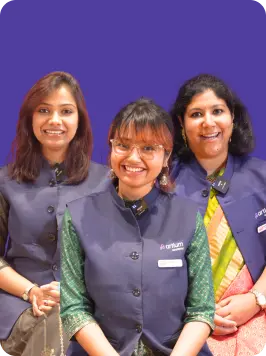Indian classical music has existed for ages and is an integral part of Indian culture.
That’s why most people associate Carnatic classical music with an ancient, complex art form meant only for a select few. Carnatic music originated in the temples and courts of Southern India and is considered one of the richest art forms in the world. With its deep spiritual foundation, mathematical brilliance, and emotional intensity, Carnatic music has not only stood the test of time but has grown beyond borders.
Today, thousands worldwide learn, practice, and celebrate Carnatic classical music. However, learners outside of the traditional circle still hesitate to take the first step into this realm of music.
Why? Some long-standing myths make this beautiful art form seem distant or difficult. Our Carnatic experts, while taking online Carnatic music classes, get questions like, “Am I too old to start?” or “Do I need to know Tamil or Sanskrit?” all the time.
So, we have decided to answer all those doubts through this blog. Let’s debunk five of the biggest myths about Carnatic classical music and show you how approachable, inclusive, and modern this art form really is.
5 Carnatic Music Myths Every Music Learner Should Stop Believing
Carnatic music isn’t just for the traditionally trained or the deeply devout. Let’s bust 5 myths that stop music lovers from exploring its true value.
Myth 1: Carnatic Music Is Only for South Indians
Reality: Although it originated in South India, today, Carnatic classical music is practiced by aspirants all over India and worldwide. Although Carnatic music is native to Tamil Nadu, Karnataka, Andhra Pradesh, and Kerala, its rising popularity has spread beyond the borders of these states. Today, its appeal spans geographic, linguistic, and cultural lines. All this is because of the global Indian diaspora and digital learning platforms.
Today, learners from major metropolitan and other cities in India, the US, the UK, the Middle East, and Europe pursue Carnatic music.
Artists from non-Indian backgrounds actively pursue Indian classical traditions. The most prominent example is Jon Higgins. He was an American citizen who mastered Carnatic classical music and collaborated with contemporary International jazz artists. This showcases the real popularity of the universal language of Carnatic music. Online singing classes have played a massive role in this transformation, making learning available to anyone with an interest and internet access.
Myth 2: You Need to Start as a Child to Learn Carnatic Music
Reality: Starting early will be helpful, but you can learn Carnatic classical music at any age.
This is one of the most common and discouraging myths. That’s because the human brain can grow and adapt, and scientists call it neuroplasticity. So, it does not matter if you are 8 or 48; your brain can pick up new skills, especially creative ones like singing.
Today, many online music classes offer structured courses tailored to your needs. So, age is definitely not a constraint. These lessons are paced, beginner-friendly, and tailored to your busy schedule. Adult learners often bring something extra to the table:
- Discipline and better time management
- Emotional maturity to understand musical nuances
- A genuine desire to explore music deeply
So, if you’ve always wanted to learn Carnatic Classical Music, now is the best time to start, no matter your age!
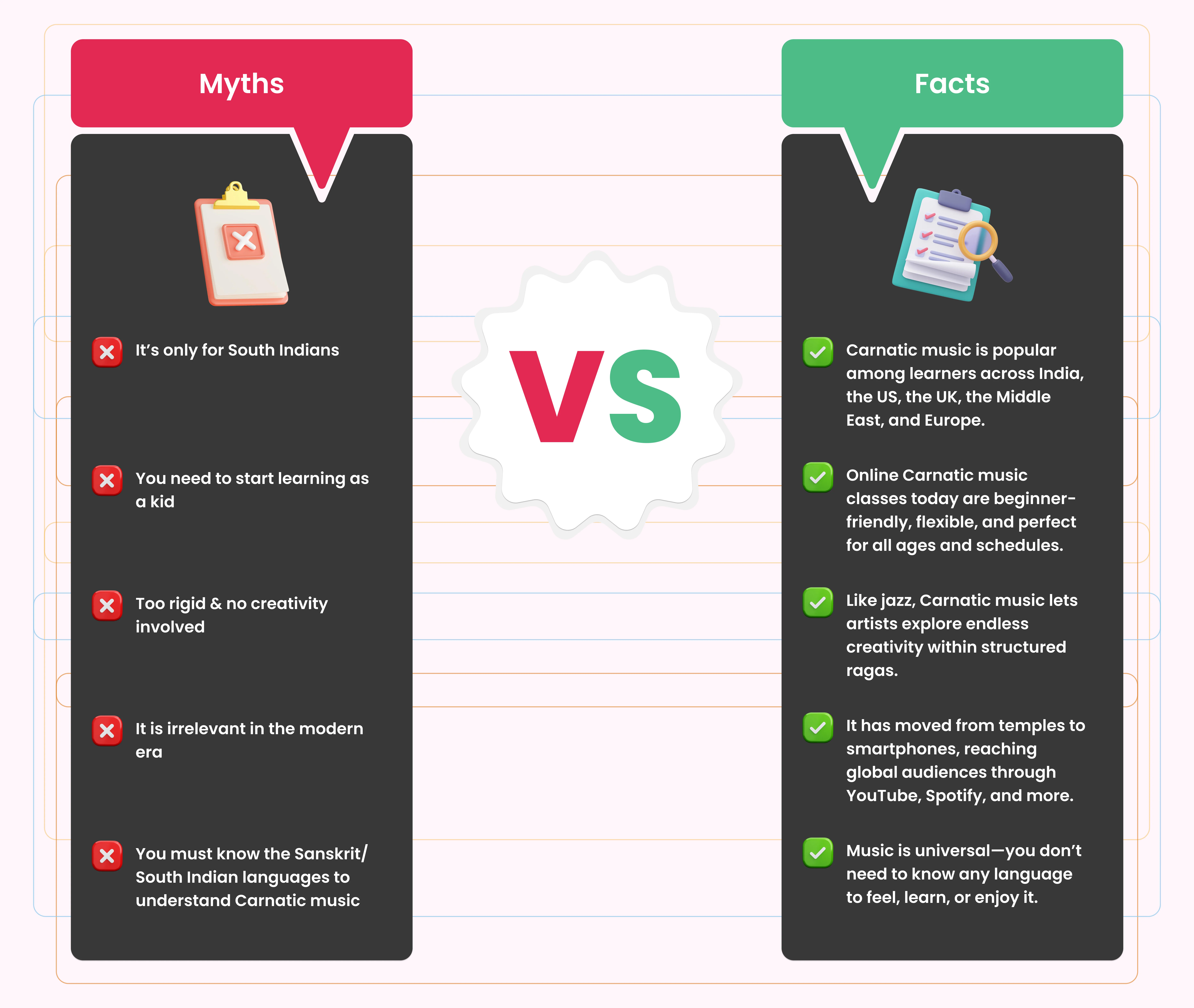
Myth 3: Carnatic Music Is Too Rigid and Has No Scope for Creativity
Reality: Structure and creativity are the core elements of Carnatic classical music.
Carnatic music is not rigid. It follows the rules that create a framework for immense creativity. Here’s how Carnatic music shines:
- Alapana: A free-form improvisation of ragas that helps in exploring their emotional depth
- Neraval: Re-imagining a single line of a composition with melodic variations
- Kalpana Swaram: Spontaneous swara patterns built around rhythmic structures
These creative segments allow an artist to play with melody, rhythm and emotion. Not just that, it offers them infinite possibilities within a raga’s grammar. In some ways, Carnatic music is exactly like jazz music.
All you have to do is understand the scale and beat, and you can create your magic. When you enrol to learn music online, you will often begin to explore simple improvisation as early as you reach intermediate levels. Far from being restrictive, Carnatic Classical Music encourages a personal touch, a musical signature that’s uniquely yours.
Myth 4: Carnatic Music Is Irrelevant in the Modern World
Reality: Carnatic classical music is one of the most thriving music genres in today’s digital, multicultural world.
With the growing popularity of YouTube, Spotify, and other social media and streaming platforms, Carnatic music is reaching audiences worldwide. It is not just locked in temples or old literature books, but on your smartphones. Just look at these examples:
- Mahesh Raghvan blends Carnatic ragas with electronic music using an iPad!
- Ranjani and Gayatri adapted their classical concerts with modern sound production and global outreach.
- Wellness platforms use Carnatic ragas for meditation and sound therapy.
- Many film composers borrow extensively from Carnatic music—think A.R. Rahman and Ilayaraja.
So, if you still think Carnatic classical music is irrelevant, think again. From tech collaborations and social media concerts to global festivals, Carnatic music is thriving, evolving, and more relevant than ever.
Myth 5: You Need to Know Sanskrit or South Indian Languages to Understand Carnatic Music
Reality: Music has no language; it is universal. You don’t need to be fluent in any language to appreciate it.
Most Carnatic classical music is composed in Telugu, Tamil, Kannada, and Sanskrit, but its essence goes beyond words. When you listen to or sing a Carnatic song –
- You absorb bhava (emotion)
- You connect to the raga’s mod
- You experience rhythmic energy (laya)
Moreover, many online singing classes and teachers today offer:
- English transliterations and translations
- Cultural background of the composer and the composition
- Word-by-word meanings and pronunciation guides
So, if you’re singing “Vatapi Ganapatim” or “Endaro Mahanubhavulu”, the only thing that matters is your connection to the melody and not fluency in the lyrics.
Want to learn more about myths related to Carnatic Music. Check this video:
Opening the Door to Carnatic Music
Now that we have busted the myths about Carnatic classical music, it is evident that it is not limited by geography, age, or background. It is dynamic, inclusive, and accessible like never before. Whether you’re a parent exploring classical for your child or an adult looking to realise your lifelong dream, Carnatic music welcomes you.
Here’s how you can begin your journey:
- Start with curated beginner-friendly playlists (classical + light Carnatic).
- Join online music classes to learn at your own pace.
- Attend live or virtual Carnatic concerts to experience its beauty firsthand.
Read More About Carnatic Music: What are the Fundamentals of Carnatic classical music?
Ready to Begin Your Musical Journey?
At Artium Academy, our Carnatic classical music course is designed and certified by Ms Aruna Sairam, the Queen of Carnatic Music. Under her expert guidance, we have created a music curriculum that offers global accreditation. Whether you wish to learn music online as a hobby or pursue it seriously, our structured, engaging courses are designed for learners of all ages.
If you want to explore Carnatic classical music in a way that fits your lifestyle, our online singing classes are a great way to start. Book A Free Trial class to explore more about Carnatic music and take your first step into learning. We look forward to guiding you on your musical journey.
“Do you have a question related to Carnatic music? Just ask! The Artium Academy Carnatic Music Learning Companion is here to guide you—explore ragas, master talas, and improve your Carnatic music learning journey instantly!“
FAQs
Q. Who is the goddess of Carnatic music?
Ans: In Indian tradition, Goddess Saraswati is widely revered as the goddess of music, knowledge, and arts, including Carnatic music. She is often depicted holding a veena, symbolizing purity, learning, and musical excellence. Her presence is deeply embedded in the spiritual roots of Carnatic classical music, and many musicians invoke her blessings before performances or during practice sessions.
Q. Who are the 3 gods of Carnatic music?
Ans: The Trinity of Carnatic music, also known as the “Three Jewels” of Carnatic classical music, is Saint Tyagaraja, Muthuswami Dikshitar, and Syama Sastri. These 18th-century composer-saints are revered for their immense contributions to the Carnatic repertoire. They composed kritis (compositions) that showcased musical mastery and spiritual depth. Their works form the bedrock of modern Carnatic performances and continue to inspire generations of musicians worldwide.
Q. Who is the legend of Carnatic music?
Ans: Several iconic figures have achieved legendary status in Carnatic music, but Ms. Aruna Sairam is one of today’s most celebrated living legends. She is widely known as the “Queen of Carnatic Music” for her global influence, powerful renditions, and dedication to making Carnatic music accessible across cultures and generations. She also heads the Carnatic curriculum at Artium Academy, bringing her decades of experience into structured, beginner-friendly online singing classes.
Q. What is the theory of Carnatic music?
Ans: The theory of Carnatic music is based on a system of ragas (melodic frameworks) and talas (rhythmic cycles). It draws from ancient texts like the Natya Shastra and Sangeeta Ratnakara and emphasizes structured compositions and improvisation. Key elements include:
- Raga: A set of musical notes with specific rules for ascending (arohanam) and descending (avarohanam) scales.
- Tala: The rhythmic structure that underpins every composition.
- Bhava: Emotional expression in music.
- Gamaka: Ornaments and inflections that bring raga expressions to life
While the grammar of Carnatic music is detailed and precise, it also offers immense room for creativity, as seen in elements like alapana, neraval, and kalpana swaram.
Q. How Carnatic Music Engages with Indian Mythology?
Ans: Carnatic music has deep roots in Indian mythology and devotional literature. Many compositions are hymns or praises to Hindu deities and are often inspired by mythological stories, spiritual texts, and temple traditions.
Here’s how mythology plays a role:
- Compositions (Kritis) often narrate episodes from the lives of deities like Lord Rama, Krishna, Shiva, and Devi.
- Composers like Tyagaraja and Dikshitar used mythological symbolism and references to convey philosophical truths.
- Ragas are sometimes chosen to reflect the mood of the mythological story, be it devotion, valor, or compassion.
- Temple festivals and rituals often include Carnatic recitals as a sacred offering.
This connection makes Carnatic music an art form and a medium of spiritual engagement and cultural storytelling.

